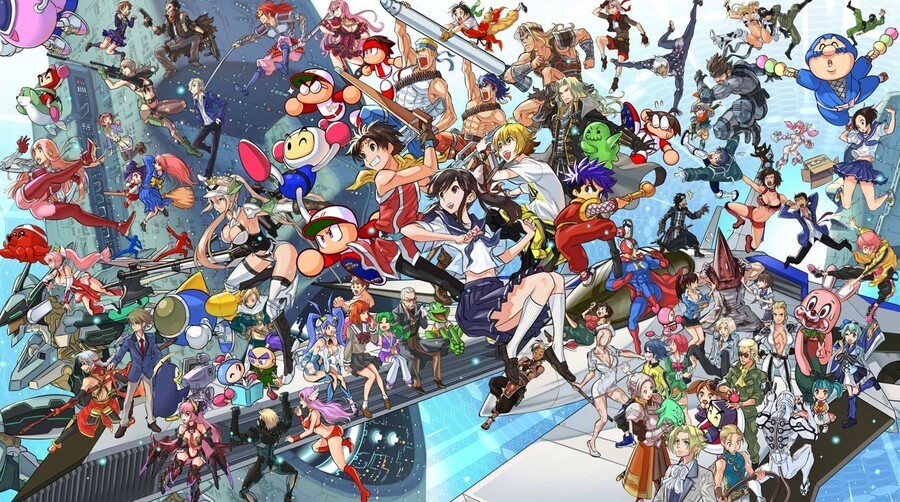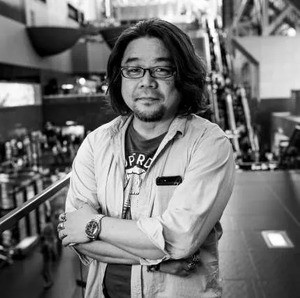
The notion of games developers turning their hands to hardware production isn't exactly groundbreaking – after all, Atari, Sega and Nintendo all had their gaming roots in arcades before producing home systems – but it's been a while since any notable games company attempted the trick. It's hardly surprising, given how much money is required to develop, produce and promote a home console these days, but once upon a time the barrier to entry was much lower, and the promise of lucrative licencing fees was too tempting to resist.
For example, Capcom tried its hand with the CPS Changer, which was effectively a means of bringing its popular arcade titles to a home audience. It was exclusive to Japan and was perhaps too niche to really be considered a serious throw of the dice, but other Japanese firms had the same idea around the same time. Taito's WoWoW system, which boasted an onboard satellite receiver for downloading games via satellite, never made it into full production but was shown off in its prototype form. Another of the Japanese heavyweights, Konami, had plans for its own domestic console, too – but it didn't get as far as the Taito WoWoW.
By 1994, Konami had become immensely successful off the back of its support of the Nintendo Famicom / NES, upon which it had produced hit titles such as Metal Gear, Castlevania, Teenage Mutant Ninja Turtles and Contra. It was also incredibly successful in the arcade area. Given that it would have been well aware of the insane profits Nintendo was generating via its home console software licencing deals, it's perhaps understandable that Konami would have considered cutting out the middle man and producing its own console, especially when you take into account the hardware experience it had via its coin-op division.
Speaking to two former Konami staffers as part of his Untold History of Japanese Game Developers series, video game historian and Time Extension contributor John Szczepaniak managed to find out a little more about this unreleased system. First up is Yoshitaka Murayama (Suikoden, Suikoden II, Suikoden III), who joined Konami as a programmer in 1992 and was quickly put to work on creating software for the new system.

"In my second year after joining the department I was put in charge of creating games for Konami's game machine, and that's when I got involved in game design," Murayama says. "Since it was an extremely secret project inside of Konami, there were very few people involved. So even though I was close to being a new recruit, I was expected to play a very large role. The plan at first was for Konami's game machine to be a console type, and it was suggested that it have a card reader function to allow players to exchange data. The plan changed midway from a console type to a portable type game machine, and it was going to have 3D (polygon) functionality that was not common at the time."
Murayama claims the console would use ROM cartridges for game distribution, and that it resembled the Game Boy. "The designs are all lost, and I'm afraid that, with my poor memory, it would be difficult [to remember them]. It gave the impression of a Game Boy with a somewhat high-class feel. While it was in development, it seems that we got word of the Sony PlayStation [first generation] and we shifted our direction into providing games for it."
Masaaki Kukino, who joined Konami in the '80s and worked on arcade titles such as Haunted Castle, Asterix and Silent Scope, wasn't involved with the project but feels that Konami decided against the venture not because it couldn't make a powerful system, but because the costs involved in distributing said system were too high.
"I was not an insider with regards to the home division," he tells Szczepaniak. "But here is what I think - probably technology-wise, developing hardware for a home console was no problem for Konami. But when it comes to costs, in terms of developing a console that is - technologically speaking - really capable and high-capacity, and then having it make money while maintaining that high-capacity, was maybe a challenge for Konami. The other possible challenge is distribution. So probably the company had to make a comprehensive analysis of business feasibility and opted out."
The Konami of today, of course, is a very different beast from what it was in the '90s. The company has parted ways with some of its most creative individuals, including Hideo Kojima and Koji Igarashi, and has focused on its fitness and pachinko businesses, with video games taking something of a backseat (at least when compared to its output in the '80s and '90s).
Still, at least we have Konami to thank in part for the likes of TMNT: The Cowabunga Collection, so it's not all bad.
Please note that some external links on this page are affiliate links, which means if you click them and make a purchase we may receive a small percentage of the sale. Please read our FTC Disclosure for more information.






Comments 3
Excluding marketing and other logistics I think the mini consoles prove that it may be easier to make a console today with the advantages in single board computers and software emulation. But even in x86 systems after the success of the steam deck we seem to have a new pc-spec handheld announced every other day!
It's interesting to hear these little bits of info come out. If you think about it, it makes some sense that some of the bigger developers would consider getting a piece of the hardware market and the software licensing that goes with it. There's not much info out there, but I recall a few references to Namco looking into releasing a home console, potentially with NEC as a PC Engine 2, and then possibly on their own. That's about all the info that I've ever come across with that, so it could have been baseless rumor in magazines, but it would make sense for the bigger developers like Konami and Namco to want a piece of the hardware market.
I made a profile just to say thanks for this interesting article - I enjoy reading about these lost tidbits of gaming history. Interesting to note that Konami finally did make its own console 26 years later with the TG16 Mini!
Show Comments
Leave A Comment
Hold on there, you need to login to post a comment...